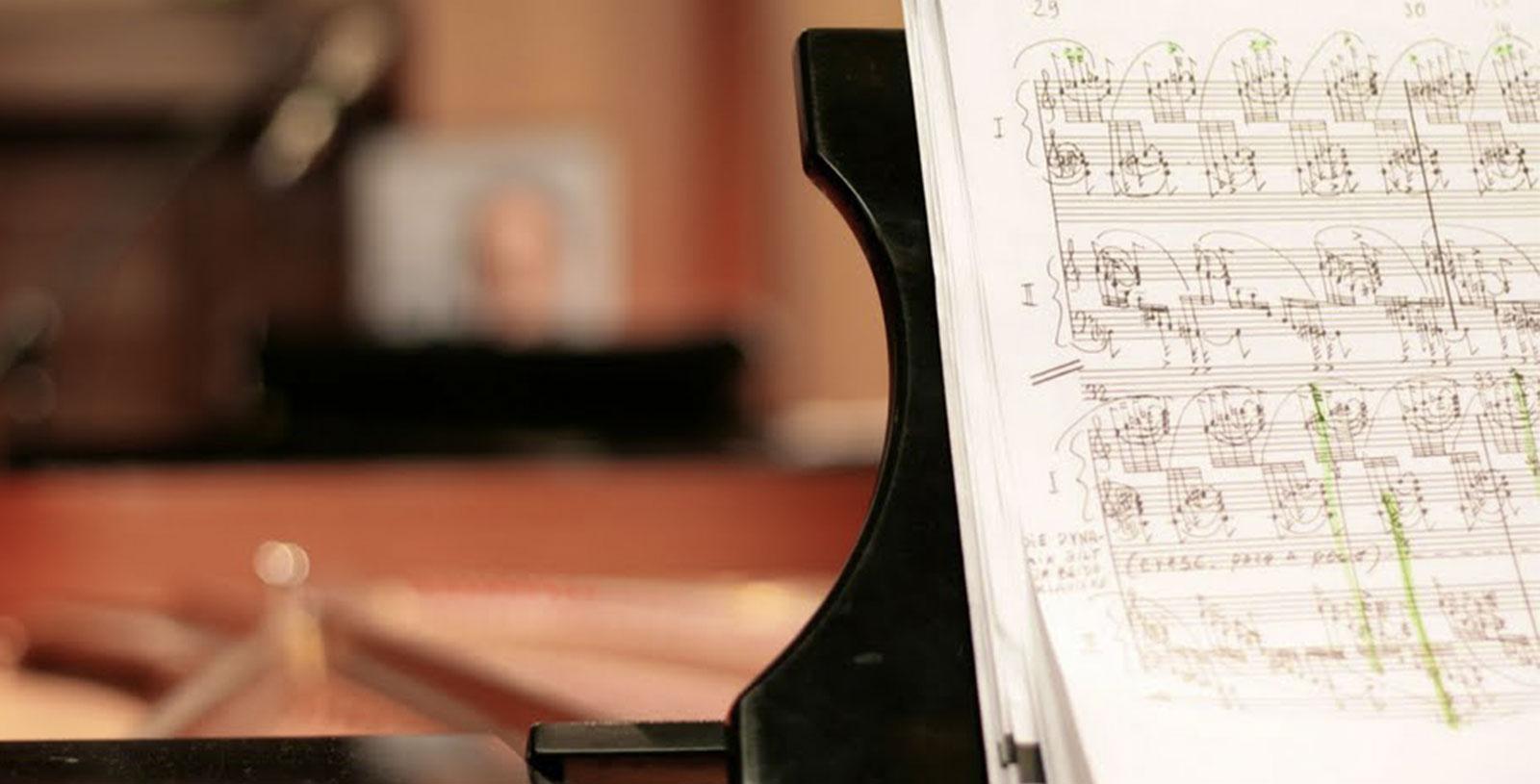Words by
Peter de Jager
ANAM Associate Artist
When I first started working professionally as a collaborative pianist, I became obsessed with the idea of perfect ensemble. Of course, there's much more to interpreting music than just being perfectly in time together, but there was a part of me that just wanted to watch the many notes my musical partners were playing go past and try to catch every one at the perfect moment, like a real-life version of Guitar Hero.

It seemed that someone in my profession, in large part, should be better at being ‘together’ musically than someone who wasn't getting paid for it, and so my obsession with that area gradually – with a lot of discussion, soul searching, and experience – became a system of thinking about what it means for two people to have perfect ensemble, to play perfectly ‘together’, and some basic principles by which to achieve this.
First of all, what exactly would ‘together’ mean in a purely acoustic sense? I played a lot in various orchestras, where people sometimes give you withering looks if you play not exactly where they think you should have, and discovered that there was a certain collective listening and breathing happening that's hard to explain, a kind of pulse that's felt by the whole group as one. You are waiting for the beat to happen, and the moment where you can't wait any longer, you play.
For a pianist or a percussionist this is tricky; we have to make a particular defined attack, and so where that attack happens is in a sense the actual definition of the beat. In an orchestral context this is especially scary because everyone else better agree that you are correct or there'll be muttering!
The same principle applies when you put a piano together with one other sustaining instrument. The piano's attacks form the skeleton upon which the connective tissue of the sustained melody can hang. There is a tendency for inexperienced pianists to play slightly too late, but once you tune your ears to listen for the moment where your sound can be a jumping off point for the other player, then you have a solid base from which to develop further skills.

Once you know how a perfectly blended sound is achieved, how do you decide together in the moment where to place it? I eventually came to the conclusion that the answer lies in breath. It's an extraordinary ability that musicians have to listen and react within these incredibly small tolerances of time, really on the order of microseconds, and I suspect we wouldn't be able to achieve this connection with other human beings if we didn't have a visceral sympathetic reaction to the sight of another person's breath. We lead each other physically and aurally to the precise slice of time implied by the infinitesimal space between an inbreath and an outbreath. It does however take courage to trust that point, and there is a kind of paradox here, because you want to listen for that moment, but once the moment is heard, it is too late to react. Thus you have to be constantly living a small distance into the future, letting everything flow past you without stopping to think about it or try and control it. It's most effective to be in something akin to a meditative flow state.
With these basic principles, and a certain amount of practical experience, it's possible to sit down with a musician you have never met before and effectively make flexible and spontaneous music together. And yet I found on many occasions that not everyone was willing to engage with me on this level, seemingly preferring to rely on some rigid sense of internal rhythm to keep time in the ensemble, without actually listening to what the sounds themselves were telling us about the musical direction and flow. This approach will obviously work to some degree, but will not easily or organically allow flexibility of pulse, deviations from the exact rhythmic grid, except with an unworkable amount of prior discussion and planning. I much prefer to share the responsibility of creating the musical flow with my colleagues in the moment, and not outsourcing it to some fixed external arbiter. I relish that sense of spontaneity and connection, and I strongly believe that the audience is very sensitive to these tiny signals and that they have a stronger emotional experience when they are pulled into the current of the music in this way.
There isn't always the luxury of building up that sort of relationship, and often in one's professional life one simply has to play the cards one is dealt in a particular situation. But collaborative music making is one of life's great joys, and it's magical to discover the deep, lasting musical relationships, and eventually grow together into a state of constant love and trust.
– Article orignally published in ANAM's Music Makers vol 36
Peter de Jager is one of Australia's most exciting pianists. His repertoire is diverse, encompassing all periods of western classical music, which he often plays on period instruments, as well as musical theatre and cabaret. He is currently on faculty at the Australian National Academy of Music as an Associate Artist, and works regularly as a collaborative pianist.